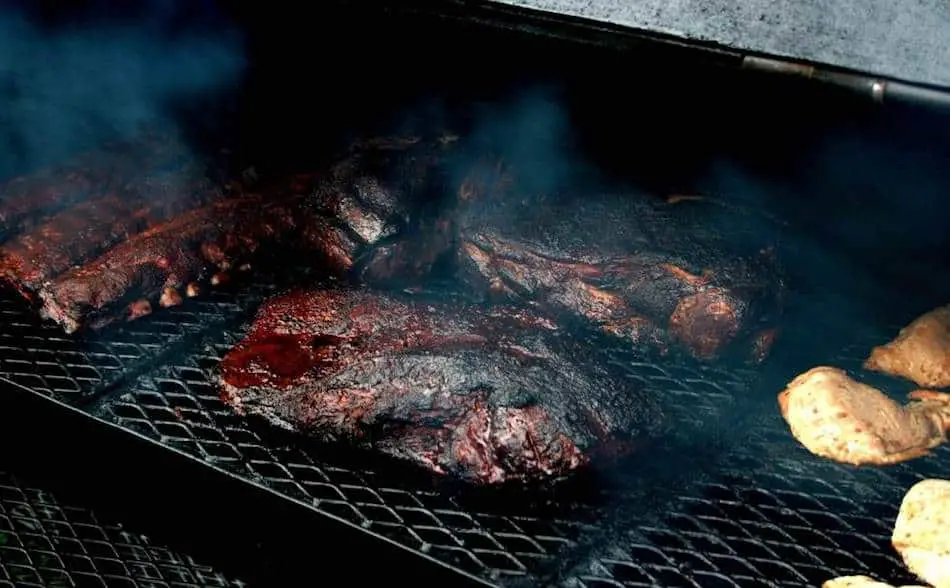
Smoking meat is simple, easy to learn, and it doesn’t have to cost you an arm and a leg. There’s many options available if you are just starting out. You could spend $50 for a basic setup or you could spend over $1000 for a ‘set-and-forget’ smoker. I’ll walk you through the basics and give you everything you need to know to get started.
So, what do I need to smoke meat? All you need is a smoker, wood and in most cases, charcoal. There are different types of smokers, some are as simple to use as a conventional oven, while others require more work. You’ll need to buy smoking wood from the barbecue section of your local store and some charcoal for the fire if you’re using a charcoal smoker.
1. Wood
It’s important to use the right wood when smoking meat. You can’t just smoke meat with any old wood, it needs to be specific smoking wood. To be safe, buy wood from a store rather than trying to source your own, because some wood is toxic. Never use scrap wood because you don’t know what chemicals have used on it. You can read my Wood Guide if you want to delve deeper on smoking wood.
Most major stores sell bags of smoking wood next to the charcoal in the barbecue section. Otherwise you can find smoking wood online.
There are dozens of wood flavors but the most common are:
- Cherry
- Apple
- Hickory
- Pecan
- Maple
- Mesquite
- Oak
Different smokers take different forms of wood. The main wood types are:
- Chunks
- Pellets
- Woodchips
- Sawdust
- Logs
Chunks are the most common type of wood used in most charcoal smokers. Wood chunks fit in the palm of your hand and will produce a steady flow of smoke for a few hours. Pellets look like chicken food and are used on pellet grills. Woodchips are about the size of a coin and are used on electric and gas smokers. Logs are used as the primary fuel source for offset smokers. Sawdust is used in smoking pouches for a quick shot of smoke flavor with regular grilling.
2. Smoke
Smoke is a combination of wood, charcoal, grease, etc, but smoke from wood is where you get most of the smoke flavor. It’s important to understand that there is good and bad smoke. Bad smoke will make your meat taste bitter.
Good Smoke
The holy grail of meat smoking is the thin, almost clear, blue-tinted smoke. You may not achieve this smoke with every cook, but if you follow the basic rules of meat smoking, you can get close. The key thing to understand is how to avoid bad smoke.
Bad Smoke
You don’t want to put your meat in the smoker until the bad smoke has cleared and the good smoke is rolling out. When charcoal briquettes are igniting, they will put out a thick, white billowing smoke. Never put your meat in the smoker until this smoke has cleared. If you use a charcoal chimney, most of the thick, white smoke should have cleared before you dump the coals in the smoker.
Clean Your Smoker
Make sure you always clean your smoker before you cook. Smokers can build-up grease and gunk after several cooks, which can have cause bad smoke. If grease and old meat dripping burn during the cook, it will produce bad smoke and impact the flavor of your meat.
3. Meat Thermometers
Traditional oven roasting cooks to time. Low-and-slow cooking is all about cooking to internal meat temperature, not time. It’s done when the thermometer says it’s done. Meat thermometers are probably the most important meat smoking accessory that you will need to buy. If you don’t have a thermometer, you’re cooking in the dark. Your meat will either be overdone, tough and dry, or it will be underdone and unsafe. For more info, check out my Complete Beginner’s Guide to Thermometers if you want to know more. I use the TP20, an Amazon Bestseller that sells for around $50 to $60. See latest price here.
There are two types of thermometers you will eventually need. The first is a wireless thermometer with at least two probes. One probe is attached to the grill and measures the cook chamber, and the other probe stays inside the meat for the entire cook and measures the internal meat temperature.
An instant-read thermometer is what you use when the meat is nearly done. A good instant-read thermometer is needed to check multiple areas of the meat. Certain roasts don’t cook evenly because they have large and small areas. An instant-read can measure those areas quickly and give you an accurate reading so you know the meat is done.
4. Meat
Once you’re setup with everything else, all you need to smoke meat is the meat itself. The most common smoking meats are brisket, pork butts, ribs, turkey, chicken and salmon. There are many more, however, these cuts are the best smoking meats.
Brisket is one of the more challenging meats to smoke, so you want to have a good understanding of the fundamentals before you dive in. The challenge with brisket, the length of time required to smoke it to perfection is anywhere from 10 to 20 hours, which is a long time to manage a smoker. When you have such a large cut of meat in the smoker that long, it can dry out easily. Brisket has a lot of connective tissue, and it requires hours to break down. But once the connective tissue has rendered, it creates the most amazing texture and flavor.
Ribs are an extremely popular smoking meat, but probably one of the more complicated cuts to smoke. The most common method used to smoke ribs is the 3-2-1 method. This method smokes the ribs for 3 hours uncovered, then 2 hours wrapped in foil, then 1 hour unwrapped with a sauce or glaze.
Pork Butt, or sometimes called pork shoulder is often used to make pulled pork. Pork butt is one of the most recommended meats for beginners because they are hard to mess up. As long as you keep the temperature of your smoker stable at 225°F, your pork will turn out amazing.
Chuck Roast is a cheaper version of brisket, and works well when used for pulled beef. This tough cut of beef needs hours in the smoker at 225°F in order to become tender.
Turkey is popular in November, but year-round smoked turkey should be promoted more. There’s nothing like a tender, juicy smoked bird, but I would say that turkey would be the most difficult meat to smoke. There is so much that can go wrong with turkey, and it’s probably the one meal you don’t want to mess up! The challenge is preventing the meat from drying out, and getting a crispy skin.
There are many more smoking meats, but my suggestion is to start small with cheap cuts of meat and then work your way up to a brisket. Whole chickens are great for beginners, because they are inexpensive. Then work your way up to the “big meats”.
I have a Complete Meat Guide that gives you step-by-step instructions on all the best smoking meats.
4. Rubs
The rub plays an important role with nearly all smoking meats, and one component you want to get right. The rub is a combination of spices sprinkled onto the outside of the meat, and usually contains garlic powder, onion powder, paprika, salt, pepper cumin and other variations. The rub not only adds to the flavor of the meat, it also helps form the bark-the crispy outer layer found on smoked meat. There are dozens of rub recipes and even more pre-made rubs online or in stores. Here is a basic rub recipe that you can use on just about any meat.
Standard Barbecue Rub

I found this great rub recipe through How To BBQ Right. I use this recipe and alter it slightly depending on what I'm cooking. Made by the guys at Townsend Spice & Supply: https://townsendspice.com/
Ingredients
- - ½ Cup Paprika
- - ½ Cup Salt
- - ½ Cup Sugar
- - ½ Cup Granulated Garlic
- - ¼ Cup Granulated Onion
- - ¼ Cup Chili
- - ¼ Cup Cumin
- - 2 Tablespoons Black Pepper
- - 2 Tablespoons Dry Mustard
- - 1 Tablespoon Cayenne Pepper
Instructions
- Combine all the spices together in a large mixing bowl
- Store rub in rub shakers
Pre-Made Rub Comparison
There are dozens of rubs on the market, however, many contain too much salt so should be used with caution. Here is a table of all the best rubs found online or in stores.
5. Smokers
There are different types of smokers that range from the easy ‘set-and-forget’ smokers through to the simple kettle grill smokers that require a bit of fire management. There’s a smoker to suit every budget, from the $50 secondhand kettle grill right through to a $5000 plus offset smoker. For more information, read my Smoker Guide.
There are several types of smokers, and they are categorised by the fuel source. The basic categories are:
- Electric Smokers
- Gas Smokers
- Offset Wood Smokers
- Pellet Smokers/ Pellet Grills
- Charcoal Smokers
Electric Smokers
Electric smokers are as simple to use as a conventional oven. All you have to do is plug them into an electrical power source, insert the wood chips, lay the meat on the rack and switch it on.
Electric smokers produce smoke by burning wood chips. Most electrics have a tray that slides into the side and a heating element burns the wood, causing it to smolder. Electric smokers a common, so you should be able to find one in the barbecue section of any major store. Masterbuilt Electric Smokers are very popular on Amazon and only cost a couple of hundred dollars. I have a Complete Guide to Electric Smokers that details all the most popular brands.
Electric smokers have their share of haters in the meat smoking community. The major reason some meat smoking enthusiasts scoff at electric smokers is because they don’t produce as much smoke as other smokers. This is true. You won’t get the same smoke and charcoal flavor that you would from a charcoal or wood smoker. However, the convenience of an electric smoker outweighs the cons. The best thing about an electric smoker is that you can smoke meat on days when you wouldn’t normally have the time. Electric smokers are a great introduction to meat smoking because even if you progress to other smokers, you will always use your electric.
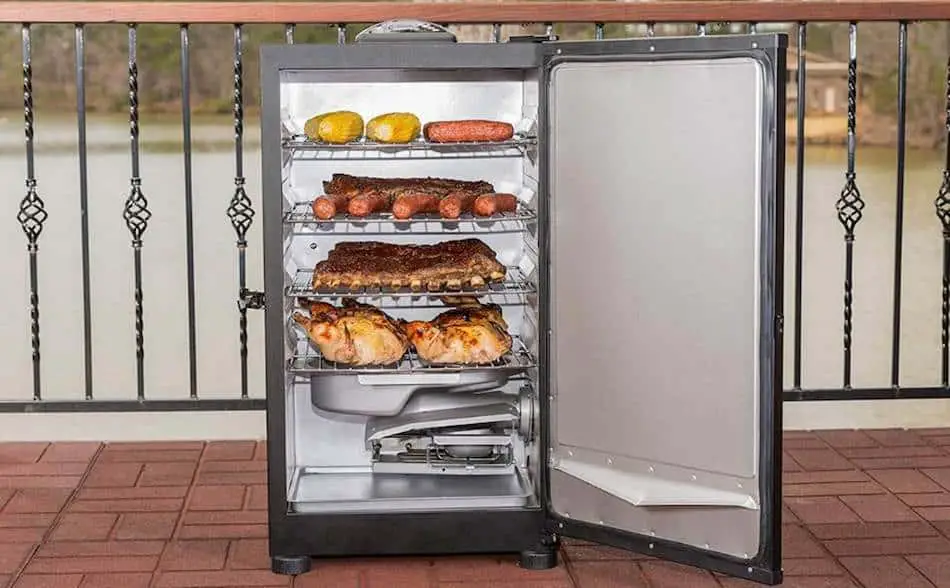
Gas/Propane Smokers
Gas smokers look almost identical to electric smokers and operate virtually the same way. The only difference is they run on gas/propane rather than electricity. Gassers are sold wherever grills and other types of smokers are sold. Masterbuilt also does a gas smoker that looks identical to the MES electric smoker. For more on these smokers, check out Are Gas Smokers Any Good?
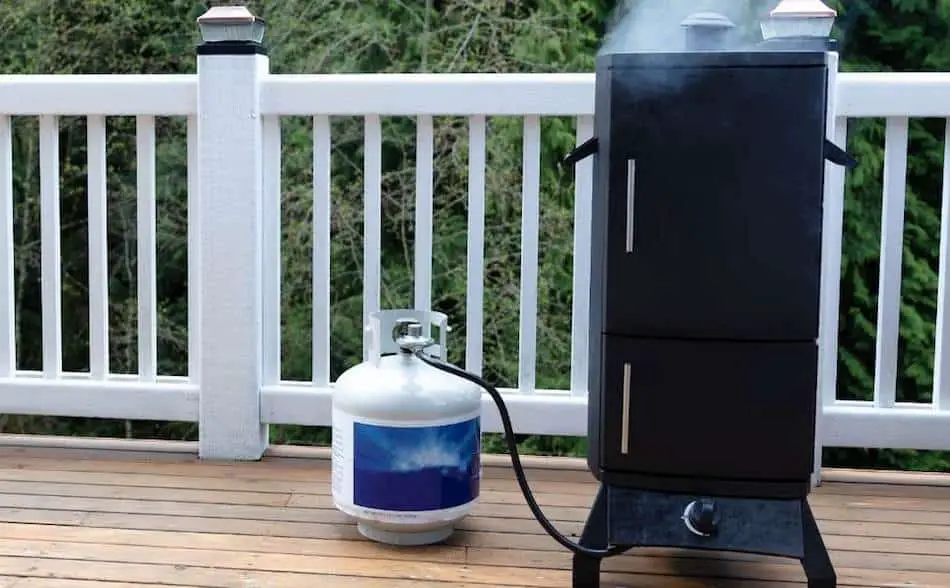
Offset Smokers/Stickburners
Offset smokers use wood as the main fuel source and are what many consider being the purest form of meat smoking. Offset smokers have two parts: a cooking chamber and a firebox. Having the fire separate from the cooking chamber allows you to cook the meat indirectly. Indirect cooking is by far the best way to smoke meat low-and-slow.
Offset smokers aren’t recommended to the novice meat smoker. You normally work your way up to a stickburner because they are fairly difficult to manage.
The other reason stickburners aren’t suited to beginners is the price. A decent offset smoker will set you back over 1k and the delivery costs are through the roof. Unfortunately, you have to buy offset smokers from the manufacturer. You can’t just buy a good offset from the store. There are many cheap offset smokers on the market, but these aren’t genuine offset smokers. These imitation offset smokers are only a few hundred dollars, but they work nothing like real stickburners. Cheap offsets are made of thin metal and are full of leaks. For an offset smoker to function, it needs to be a solid construction, well sealed with thick metal. Offset Smokers: Everything You Need to Know About Stickburners.
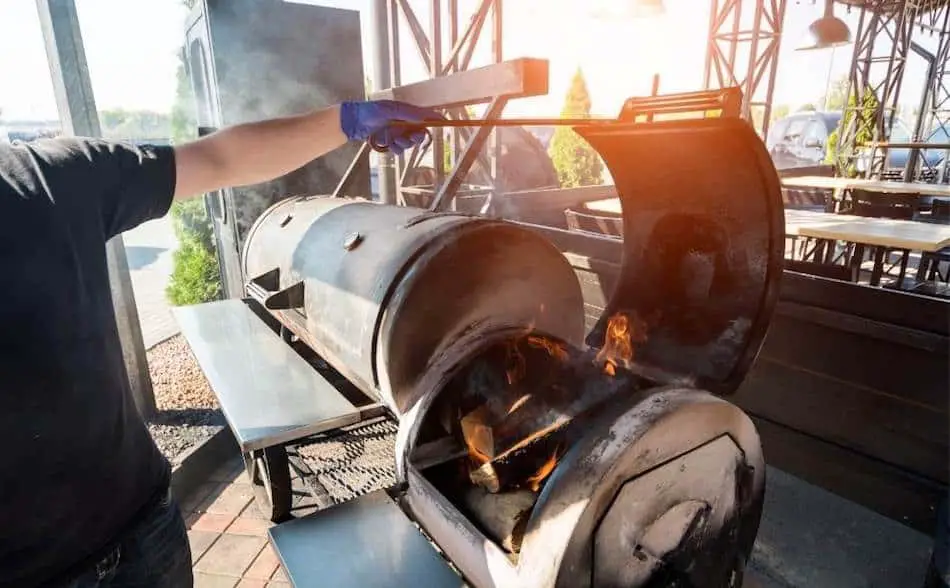
Pellet Grills/Smokers
Pellet grills are a fantastic invention and look similar to a regular hooded grill. Traeger was the first pellet grill, but there are now dozens of different brands that have surpassed the original manufacturer. Pellet grills use wood pellets as the primary source of smoke and flavor. Wood pellets are made from compressed sawdust and are available in different wood flavors. Pellet grills are expensive, but they are one of the best ‘set-and-forget’ smokers on the market. Pellet Smokers: Everything You Need To Know.
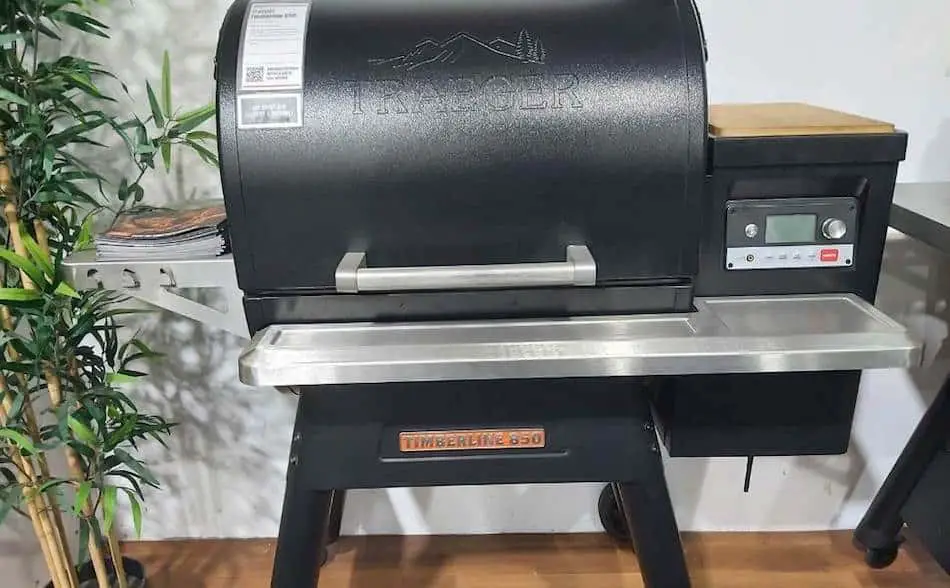
Charcoal Smokers
Charcoal smokers are the most common type of smokers. There are many varieties of charcoal smokers. These smokers use lump charcoal or briquette charcoal as the source of fuel. The charcoal smoker sub-category includes:
- Kettle Grills
- Ceramic Kamado/Egg Smokers
- Drum Smokers/UDS
- Bullet/vertical Smokers
The Best Charcoal Smokers: An In-Depth Guide
Kettle Grills
Kettle grills can be used to smoke meat and are a good entry-level smoker. You can pick up a secondhand kettle grill for $50 and smoke just about anything from chicken wings to brisket. Charcoal briquettes work best on kettles with a couple of wood chunks thrown on top of the hit coals. The best way to arrange the coal briquettes for low-and-slow cooks is by using the Snake Method or the Minion Method. To find out what you can do on your old kettle grill, check out Can You Smoke Meat On A Weber Kettle?
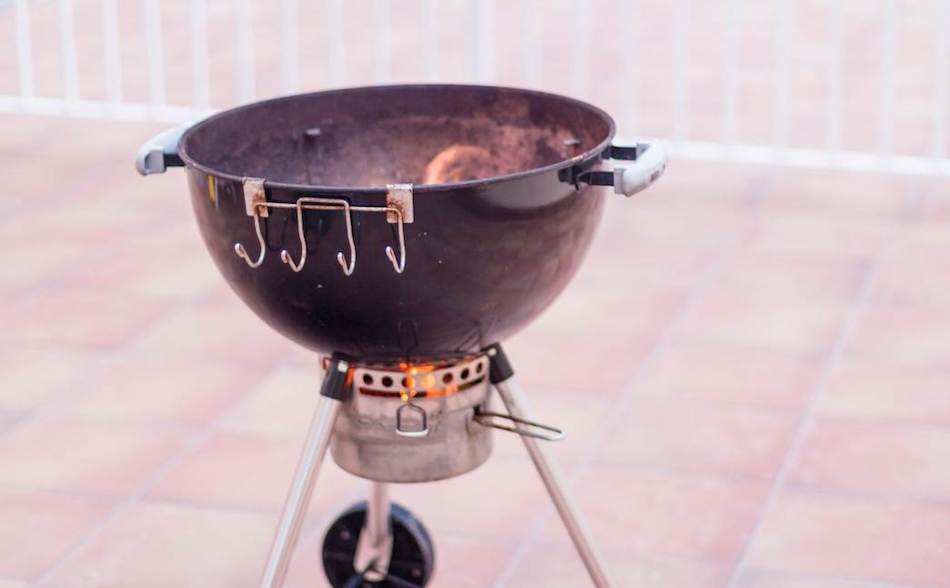
Ceramic Kamado/Egg Smokers
Big Green Eggs and Kamado Joe are two of the most popular ceramic smokers on the market. Ceramic smokers are costly, but they are one of the most versatile cookers imaginable. You can smoke, bake, roast and grill on a kamado. Ceramic smokers are made of ceramic materials so they retain heat better than any other smoker. These smokers are well insulated, so if you live in a cold climate, a kamado grill will allow you to smoke meat year- round. Egg smokers use charcoal as the main fuel source and wood chunks work best for smoke. Kamado Smokers: Everything You Need To Know About Ceramic Smokers.
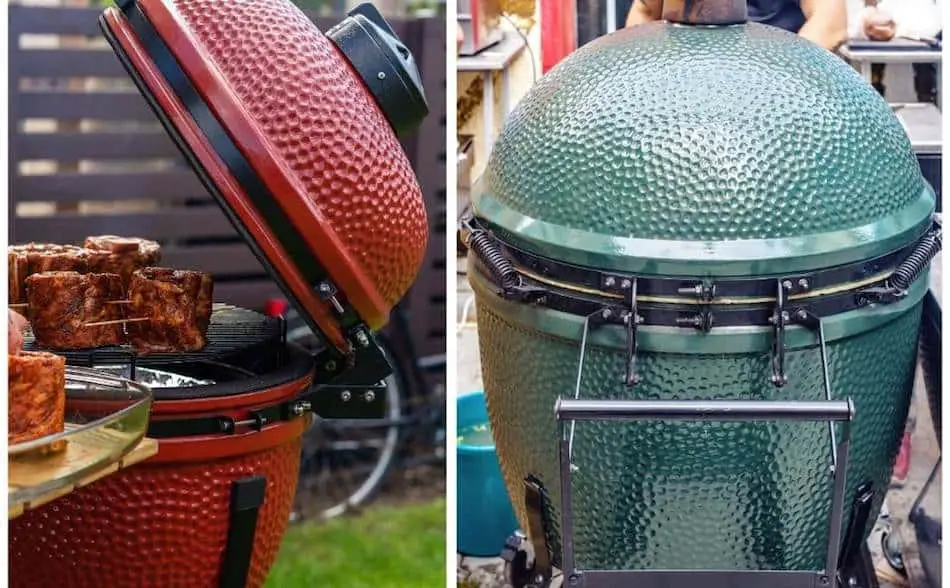
Vertical/Bullet/Water Smokers
There are dozens of different bullet smokers on the market. Some are good, some aren’t worth the time and money. The Weber Smokey Mountain would have to be one of the most popular smokers on the market. Competition meat smoker Harry Soo has won world championships using a WSM. Not only do Smokey Mountain’s smoke meat unbelievably well, they only cost about $300. The WSM is one of the best charcoal smokers on the market. Check out my in-depth guide here: Weber Smokey Mountain
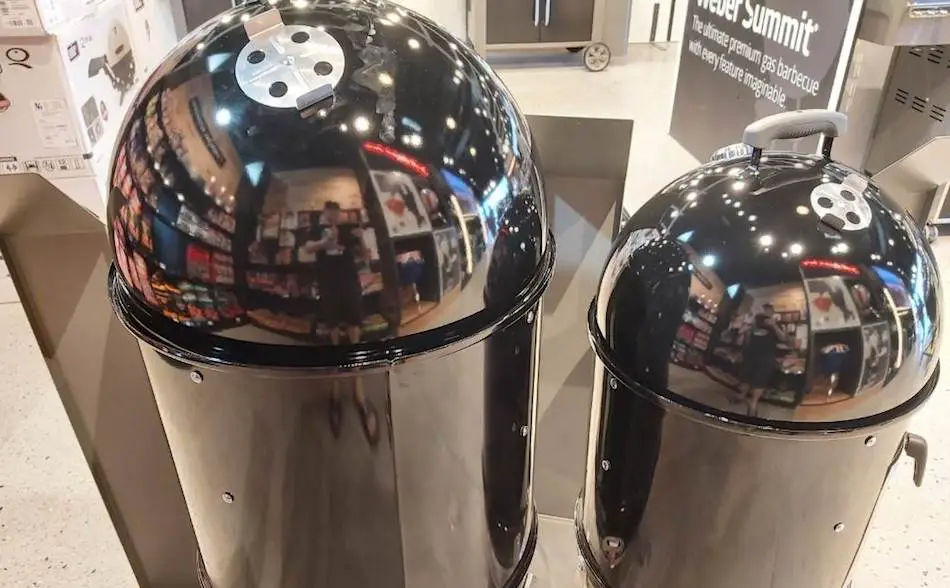
Drum Smokers
Ugly Drum Smokers have an almost cult-like following online. There are hundreds of You Tube videos on how to build a UDS. The best thing about a drum smoker is you can build one yourself for about $100, and it will match it with any other smoker. If you want to learn more about how to use a UDS, check out this UDS guide.
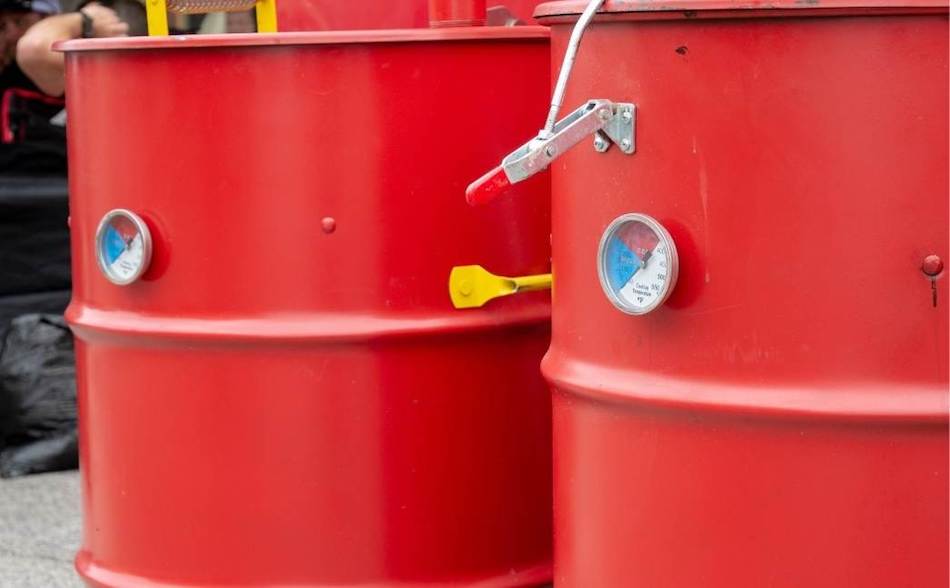
Other Meat Smoking Accessories
Charcoal chimney. If you have a charcoal smoker, a chimney starter is crucial. Lighting coals in your smoker can be frustrating, but a chimney starter makes life much easier. A chimney starter is a metal cylinder with holes in the sides and bottom and allows you to add fully lit coals to your smoker, which speeds up the process.
Heat Proof Gloves are an important accessory, especially if you have a charcoal smoker where you will need to manage a fire. You can use welding gloves, however heat-proof barbecue gloves make it easier to handle utensils, racks and meat.
My Favorite Meat Smoking Tools
Thanks for checking out this article. I hope you learned a few things. Here are some of my favorite tools I use when smoking brisket that may be useful to you. These are affiliate links, so if you decide to purchase any of these products, I’ll earn a commission. But in all honesty, these are the tools I recommend to my family and friends who are just starting out.
Meat Thermometer: There are dozens of fancy thermometers on the market, but I still use my trusty TP20. For around $50, I have a high-quality meat thermometer with two probes, and can track the temperature of my smoker with one probe, and my meat with the other probe. The ThermoPro TP20 is an Amazon Best Seller because it’s the easiest thermometer to operate, is durable, highly accurate, and comes with pre-programmed meat settings.
Instant Read Thermometer: Arguably, the second most important tool you need is a fast and accurate instant-read thermometer. These tools play an important role in the latter stages of the cook when the meat needs regular checking in multiple areas. I use the ThermoPro TP19 because it can do everything a ThermaPen can do, but for a fraction of the cost. You can check out the TP19 on Amazon here.
Wireless Thermometer: The latest thermometers on the market have no wires and can be controlled by wi-fi via your phone. Airprobe 3 is the best of this technology.
Butcher Paper: Wrapping brisket in butcher paper has become a huge trend in barbeque thanks to Aaron Franklin. Wrapping your brisket in paper will give you a nice brisket bark. However, you can’t just use any old paper, it has to be unwaxed, food grade paper. You can find it on Amazon here.
Advanced Thermometer and Automatic Temperature Controller: Once you’re ready to take things seriously, the FireBoard 2 Drive is a six-channel Bluetooth/Wi-Fi thermometer that can monitor up to 6 pieces of meat, control and graph your cook sessions on your smartphone, and attaches to an an automatic blower that will convert your charcoal smoker to a set-and-forget. This is one of the most advanced meat thermometers on the market. You can check it out on the FireBoard website here.
